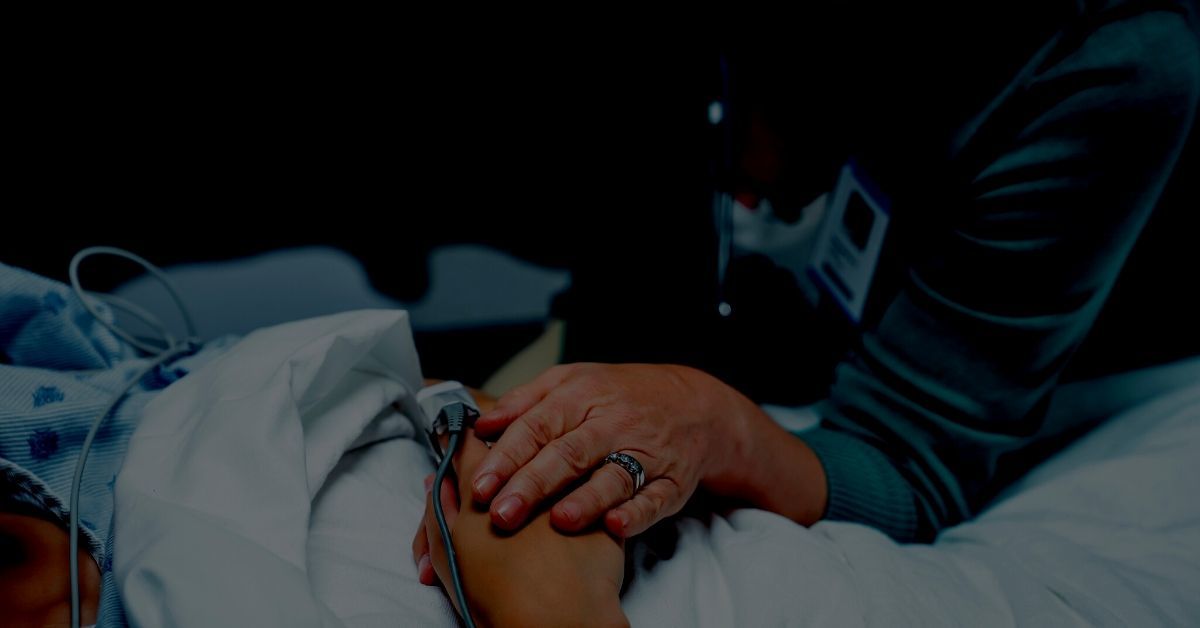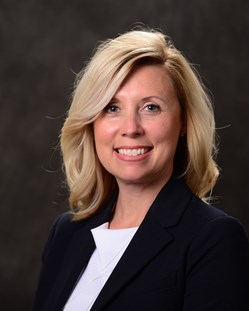The Next Profile in Our Year-Long Celebration of the Amazing Accomplishments of Nurses
Every day nurses around the globe deliver kind, compassionate care—they hold the hand of an elderly patient, dry the tears of a frightened child, and comfort grieving family members. For this work—and in recognition of the 200th anniversary of Florence Nightingale’s birth—the World Health Organization has designated 2020 as the “Year of the Nurse and Midwife.” Here at TeleTracking, we are honored to have many dedicated, devoted nurses on our team—and are also honored to work with so many wonderful nurses at our client sites. That’s why every month this year, we’ll be featuring the touching, inspiring stories of the people that work hard to ensure that no one should ever have to wait for the care they need.

Brandi Hollins, RN, BSN, MBOE is a Clinical Workflow Consultant at TeleTracking and also serves as the AORN Informatics Specialty Assembly Chair. She has 17 years of experience in healthcare and is committed to driving continuous process improvement in the face of today’s rapidly evolving marketplace. Prior to joining TeleTracking, Brandi was the Director of Nursing at The Pickerington Surgery Center, the Manager of Outpatient Surgery at Genesis Healthcare System and an Assistant Nurse Manager at The Ohio State University Medical Center.
1. Why did you decide to become a nurse?
I was in the middle of my student teaching, working towards becoming a middle school science teacher, when I gave birth to our second child. My birthing nurse was AMAZING! Her personality, expertise and knowledge provided my husband and I with the feeling of safety that we needed during that life changing moment. I’ll never forget the moment when we were in the birthing room, I looked at my husband and before our son was even born, I said, “I’m going back to school to become a nurse!” He thought I was crazy! But I did go back to school, and I did become a nurse. Being able to comfort patients and their family members is just incredibly rewarding.
As a side note, my husband ended up going back to school to become a nurse too!
2. What are the biggest differences you’ve seen in the profession since you started your career?
Nursing inclusion and autonomy! The profession is evolving into one with highly specialized positions and nurses are well-respected members of the medical community. I also see major changes and a real transformation in how nurses perceive and embrace technology. The impact of technology really has reshaped the way we’re doing our jobs today. We are understanding the importance of data and how it speaks volumes.
3. What are the biggest challenges facing nurses today?
Staffing is a giant challenge for everyone. It is estimated that one million RN’s will be needed by 2022! Nurses already often feel as if they aren’t doing enough for their patients and are constantly being asked to do more with less—and these feelings ultimately lead to burnout and dissatisfaction. In addition, nurses find this morally distressing since their main goal is always to provide the highest quality of care to their patients.
4. What do you think can be done to solve the nursing shortage?
- I believe there must be an incentive program to address this issue. We know we need nurses; however, how do we get people to even consider the profession? One possibility is establishing grant funding for recruiting initiatives.
- Many facilities are pushing to “only” hire BSN educated RN’s. This has become an issue for associate degree nurses [ADN]. If there is a true shortage, a solution would be to hire ADNs and place them on a pathway to becoming a BSN within a certain amount of time.
- We also need nurse educators to be prepared and possibly incentivized. If there is to be an influx of students, there also needs to be enough educators.
- Facilities are already aware of this shortage—whether it’s globally or within their very own system. Looking at the shortage internally, they could start programs/pathways in-house to develop employees who may be working in other functions and encourage them to pursue nursing. Some systems are already offering bonuses to nurses who are thinking of leaving to stay—which is a nice band-aid but doesn’t fix the problem. Across the board though facilities are forced to do more with less and so process improvement is a great idea—looking at waste, including the staff in the planning and creating action plans. It also involves establishing baseline information, monitoring results and evaluating if the plans are alleviating issues for the frontline staff. Little wins create hope for the nurses. If they see they are being heard and action is happening, this alleviates some tension and assists them with providing a better quality of care.
5. Share a patient story that has impacted you personally.
Let’s just say NURSES HAVE THE CRAZIEST STORIES! I will spare you the good, the bad and the funny.
In my career, I have found that a human is a human. It does not matter to me as the nurse—a patient’s status, their career, if they’ve done bad or if they’ve done well. A patient is a human being who needs care, and I’m the other human being who can provide that healing care. You never know what a patient and their family have been through in life. I do know though that if you sit and listen to the patient and their loved ones it helps to ease what they are going through. Compassion, respect, dignity and communication always helps at mending hearts.
6. The World Health Organization has designated 2020 the International Year of the Nurse and the Midwife. Why is this type of recognition so important?
It’s not the goal of a nurse to get recognition—we believe we are just doing what we were born to do. However, it is truly an honor for nurses to be recognized at this level. We have come so far in this profession! Nursing has such a wide variety of roles and specialties and the contribution that nurses make to the healthcare industry is immeasurable. And nurses are the most trusted profession! [Note: I didn’t make this up…this was a Gallup survey. 😊]
I believe we will start to see even more changes within the profession with this recognition. Having the stage to celebrate being recognized will shine a light on us all. And this can only increase innovation, motivation and a better understanding of nursing.
7. How does TeleTracking help nurses and other health professionals deliver a better patient experience?
From a nurse’s perspective, we are continuously communicating with multiple areas throughout our shifts—and having several different modes of communication can be very challenging. And that communication must be easy to understand and fast. With technology advancing quickly, and healthcare continuously moving towards greater uses of it, it’s key to have the right product that provides the best solutions for the end-user. TeleTracking improves communication and reduces the chance for errors. Having visual management that is correct and in real-time is a giant leap forward for efficiency—leading to a higher quality of care for the patient.
Especially in the OR setting, there is a struggle with communication and what is going on with the patient in real-time. TeleTracking’s Clinical Workflow™ Suite improves the perioperative setting:
Verbal communication:
1. Current State
- Staff utilize phones and other devices where each person verbally provides information. Clinicians may be with a patient at the time of a message and be interrupted. They will either have to step away from the patient or the patient will hear what is being said. Patients are already anxious in the perioperative setting—the addition of stimulation and interruptions only increases their apprehension.
- In the perioperative setting it’s typical for there to be staffed positions that are at a desk: Registration, PreOp, OR Control, PACU and Central Sterile. If we were to measure the amount of phone calls that transpire to and from these locations, it would be an enormous amount. It would be incredible to find out the amount of time spent going through the actions of calling/receiving and turn it into a dollar amount. These calls not only interrupt both parties involved—there is also the frustration of several parties calling for the same information on one patient and then having to find out the information from the bedside nurse/tech. The information flow is filled with interruptions!
2. Future State
- With TeleTracking’s Clinical Workflow Suite, the click of a button replaces ephone calls. This action is displayed across the continuum of care on each department’s views. Upon clicking, it can also send a notification to the required end users. This action is displayed for all to see and sends a notification instead of causing an interruption in the care of the patient.
- Case Cancellations - If the OR Control desk cancels a case on the day of a procedure, the control desk member can cancel in either the EMR (interface with Clinical Workflow Suite) or in Clinical Workflow Suite. Once the case is cancelled, it will display on all screens and in all locations the case is now canceled. If the OR setting would like, it can also send a notification to the required end users to acknowledge the cancellation. This eliminates all the phone calls to all the locations.
8. How is TeleTracking’s OR solution helping to improve communication/efficiency across the care continuum?
It is often joked that the OR setting is considered a “black hole” within the hospital. Staff wonder, what is going on in “real-time” with the patients and the supporting areas? Having an electronic real-time view of the OR schedule—knowing when patients walk into the registration area and then visually seeing the real-time flow of the patient as they move to Pre-Op, the OR and PACU—offers the facility the information they need to be proactive and efficient. At the tap of an icon we can alleviate many phone calls, text messages, pages—and create more time for the staff to be with the patients. Each icon can also be displayed on each screen for each area—this transparency can eliminate many frustrations of not knowing what is going on in real-time and the areas can prepare for better outcomes.

